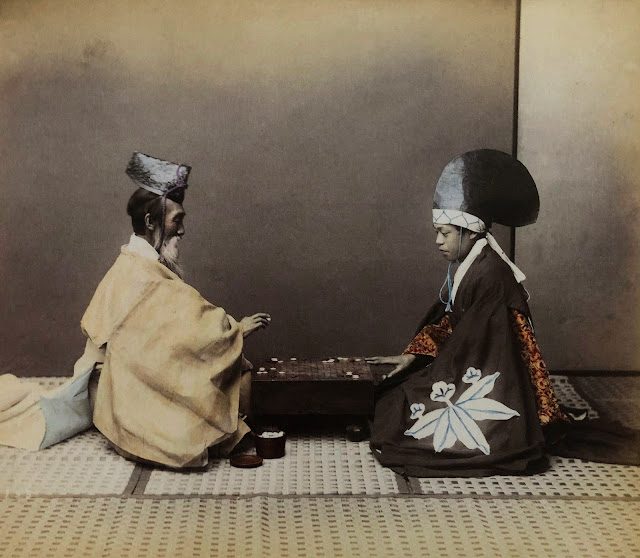INDONESIA – INDONÉSIE
Sulaeman & the National University Group of Djakarta – Flute & Gamelan of West Java – Tangent Records TGS 137, recorded by Mike Steyn*, released in 1978 (LP)
I first heard Sulaeman’s heavenly bamboo suling flute accompanied by kacapi zither when I purchased this album in the early 1980s. Everyone I played this music to, even people unfamiliar with traditional music, fell under its ethereal spell.
The Sundanese suling master, born c. 1910, started his career very young accompanying famous singers in the 1920s and 1930s, with whom he recorded a string of shellac 78 RPM discs. Sulaeman lived as a recluse and disappeared from view until he was rediscovered, in 1970, and invited to join the Faculty of Fine Arts at Jakarta’s National University. Sulaeman subsequently toured in Indonesia and abroad and recorded this precious duet featuring his exquisitely magical suling flute acccompanied by a delicate and lyrical 18-string kacapi zither played by Sukaya.
Side B features a small gamelan orchestra from West Java with gongs, chimes, metallophones a cymbal and drum played by the National University Group of Djakarta with Sulaeman, Sukaya, Syaukat, Katiyo, Setu, Sudarga and Suryabrata (orchestra director)
J’ai découvert la flûte suling céleste de Sulaeman accompagné d’une cithare kacapi pour la première fois après avoir acheté cet album au début des années 1980. Toutes les personnes à qui j'ai fais écouter cette musique, même celles peu familiarisées avec la musique traditionnelle, sont tombées sous son charme éthéré.
Le grand maître du suling soundanais, né vers 1910, débuta sa carrière à un jeune âge en accompagnant des chanteurs célèbres dans les années 1920 et 1930, avec lesquels il enregistre une série de disques 78 tours. Sulaeman vivait en solitaire et disparu de la circulation jusqu’à ce qu’il soit redécouvert en 1970 et invité à rejoindre la Faculté des beaux-arts de l’Université nationale de Jakarta. Sulaeman donna par la suite des concerts en Indonésie et à l'étranger et enregistra ce précieux duo présentant son jeu magique de flûte suling en bambou accompagné d'une cithare kacapi à 18 cordes délicate et lyrique jouée par Sukaya.
La face B du disque présente un petit orchestre de gamelan de Java occidental comprenant des gongs, des clochettes, des métallophones, une cymbale et un tambour joués par les membres du National University Group of Djakarta avec Sulaeman, Sukaya, Syaukat, Katiyo, Setu, Sudarga et Suryabrata (directeur de l’orchestre).
Music For The Bamboo Flute
A1 – Mupu Kembang (Collecting Flowers)
A2 – Catrik (Young Student)
A3 – Sinyur (Continous Whirling)
A4 – Manintin (Humming, Singing Bird)
Gamelan Music
B1 – Srimpi Kakarta (Female Dancers of the Court)
B2 – Bendrong (Invocation of the Rivercrab)
B3 – Jipang (Melody for the Beginning of a Festive Celebration)
B4 – Putri (An Accompaniment to a Dance by a Maiden; Theme; Youth)
*Michael Eugene Steyn (1931-1999), who founded Tangent Records in London, “played an unusual part in the musical life of the UK, particularly in the folk revival of the Sixties and Seventies.
While other record companies and producers responded to public interest by promoting the forgotten or neglected treasures of Anglo-American folk music, Steyn went beyond the confines of the West, to Africa and Asia. He launched a number of outstanding musicians and singers, some celebrated in their own countries but unknown in Britain, others new and obscure, and launched their international careers. Their music inspired and influenced musicians and singer-songwriters as diverse as Paul Simon and Peter Gabriel, and bands such as Genesis and Fairport Convention.”
www.independent.co.uk/arts-entertainment/obituary-mike-steyn-1045849.html
Our other Sulaeman suling flute post:
Sulaeman – Kacapi Suling - Sundanese Flute & Zither – Universitas Nasional, 1975 here
Our other Sundanese music post:
Gamelan Degung directed by Enip Sukanda (suling) - Galloway Records, 1972 here
%20-25%2078.jpg)
%20-5%2081.jpg)
%20-5%2082.jpg)
%20-5%2081.jpg)
%20-12%2045.jpg)
%20-4%2036.jpg)
%201-19%20100%20edit%20zither%20-14%2079.jpg)
%20-37%20100.jpg)
%20-21%20100%202.jpg)
%20-11%209.jpg)
%20-19%2011.jpg)

%20-23%2058.jpg)
%2021%2060.jpg)
%20-18%2061.jpg)
%20-11%2061.jpg)
